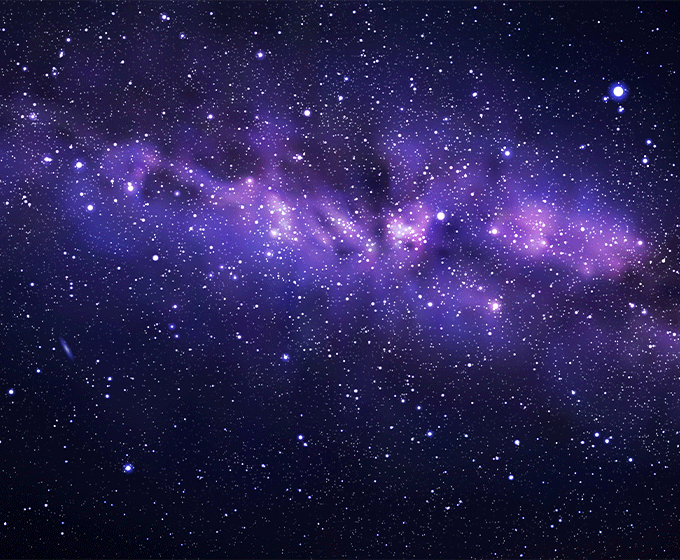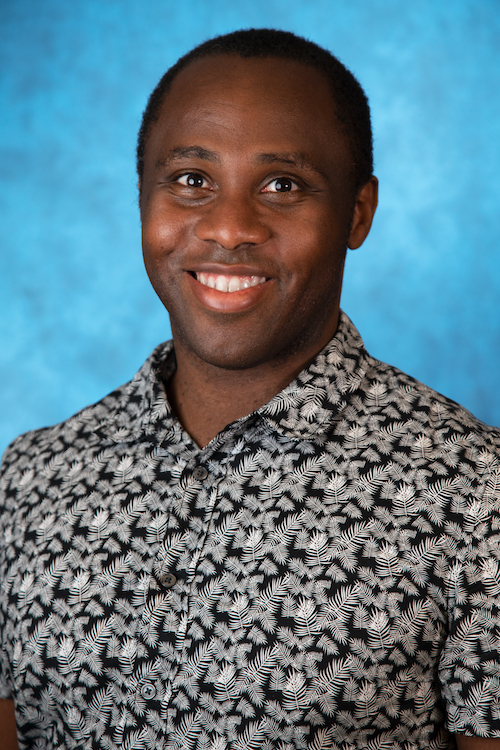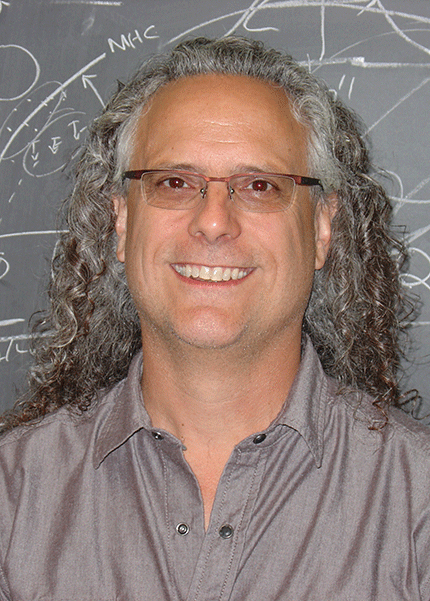
JUNE 11, 2025 — Groundbreaking research led by UTSA graduate student Nathaniel Lujan and Karl Gebhardt, UT Austin professor and chair of astronomy, is challenging long-held assumptions about the relationships among dark matter, galaxy formation and black holes.
This research is the product of the new UTSA/UT Austin joint course Galactic Dynamics—a unique collaboration across institutions to combine specialties and classrooms to synergistic effect.
In collaboration with black hole astrophysicist Richard Anantua, UTSA assistant professor of physics and astronomy, Lujan and Gebhardt investigated a dwarf galaxy 75,000 light-years from the Milky Way named Segue 1.
 Nathaniel Lujan
Nathaniel LujanKnown for its large mass despite emitting very little light, Segue 1 is traditionally viewed as a prime candidate for studying dark matter-dominated galaxies. However, the unique investigation performed by Lujan revealed that black holes are likely to play a greater role holding the Segue 1 cluster together than dark matter.
Dark matter is a mysterious substance that does not emit, absorb or reflect light, making it invisible to telescopes. However, scientists can infer the presence of dark matter from its gravitational effects on stars and galaxies. Adding supermassive black holes— which trap light behind their horizons— to the picture opens the door to a richer interplay of dark components than originally thought in the analysis of dwarf galaxies.
Lujan’s research originated from a spring 2024 course on Galactic and Gravitational Dynamics, co-taught by Anantua and Gebhardt. Designed to foster collaboration between UTSA and UT Austin, the course gave students hands-on experience with cutting-edge dynamical modeling techniques.
 Richard Anantua
Richard Anantua“Nate came into his first astronomy elective with a great work ethic and a penchant for learning new methodologies,” said Anantua. “Both were needed for this project, which combined a steep computational learning curve with a theoretical grasp of strong gravity in the vicinity of supermassive black holes.”
Using advanced computational models, Lujan made a breakthrough discovery suggesting that Segue 1 may not contain high levels of dark matter but is instead home to a supermassive black hole nearly half a million times the mass of the Sun.
This new understanding suggests that supermassive black holes are either more common than previously believed or that Segue 1 is the stripped-down core of a much older, more massive galaxy. Either scenario reshapes how astronomers and astrophysicists think about black hole formation and reduces the amount of dark matter needed to explain certain galaxies—bringing scientists another step closer to uncovering the true nature of dark matter.
 Karl Gebhardt
Karl Gebhardt“Our work may revolutionize the modeling of dwarf galaxies or star clusters to include supermassive black holes as opposed to just dark halos,” said Lujan. “It may also be a new method of systematically finding supermassive black holes outside the centers of galaxies.”
Working in partnership with mentors at UTSA and UT Austin, Lujan combined computational astrophysics with observational data to test his hypothesis. The research team used sophisticated models and high-performance computational tools developed by Gebhardt.
By simulating thousands of potential stellar trajectories, Lujan and his team found that models containing a black hole aligned more closely with observed stellar motions than those solely based on dark matter.
“The tools I developed during this work are the same ones I am now applying and expanding upon in graduate school, both through follow-up studies and new projects involving primordial black holes and dark matter,” explained Lujan.
An article on the research findings entitled, “The ‘Dark-Matter Dominated’ Galaxy Segue 1 Modeled with a Black Hole and no Dark Halo” is under consideration for publication in the Astrophysical Journal Letters, a peer-reviewed scientific journal of astrophysics and astronomy established in 1895.
The publication involves several physics and astronomy student co-authors from UTSA who had taken the Galactic Dynamics and Gravitational Dynamics course, including Loraine V. Gomez, Izabella Marron and Hayley West.
Lujan presented the research at the American Astronomical Society (AAS) 246th press conference in Anchorage, Alaska. The press conference was livestreamed on the AAS YouTube channel.
UTSA Today is produced by University Communications and Marketing, the official news source of The University of Texas at San Antonio. Send your feedback to news@utsa.edu. Keep up-to-date on UTSA news by visiting UTSA Today. Connect with UTSA online at Facebook, Twitter, Youtube and Instagram.
The College of Sciences welcomes our newest Roadrunners to UTSA at VIVA Science! This interactive event connects students with faculty, staff, student leaders, and peers while highlighting the opportunities available across the College. Enjoy mock lectures, wayfinding, and other activities to help you feel connected and ready for academic success.
Outdoor Learning Environment 2 (OLE), Flawn Building, Main CampusWe're excited to welcome the new class of UTSA College of Liberal and Fine Arts (COLFA) students to campus! Move In To COLFA is strongly recommended for new students in COLFA because it gives you the chance to learn about the Student Success Center, learn how to do college successfully and meet new friends.
Galleria (MH 2.01), McKinney Humanities Building, Main CampusBuild connections with your Alvarez College of Business peers and learn more about the Career Compass program! This opportunity will provide fun interactions, giveaways and a chance to meet your next friend!
Richard Liu Auditorium (BB 2.01.02,) Business Building, Main CampusCelebrate the end of summer and the start off a great fall semester with The Housing Block Party! This event will have live music, carnival-style treats, artists, games, and activities galore. Come and join us for a night of fun!
Multipurpose Room/Lawn, Guadalupe Hall, Main CampusBe part of an unforgettable night as SOSA takes the field for its first public performance of the season! Experience the power, pride, and pageantry of UTSA’s marching band. Learn beloved traditions, practice cheers, and feel what it means to be a Roadrunner.
Campus Rec FieldsAfter getting your student settled in their room, connect with other UTSA families at our Family Get Together. Attendees need to RSVP for the event.
Rock & Brews Restaurant - 5702 Landmark Pkwy, San Antonio, TX 78249Late Night at the Rec is an awesome UTSA tradition that turns a typical information session into an exciting night of fun. It's a unique opportunity to meet new people and reconnect with old friends.
Campus RecreationThe University of Texas at San Antonio is dedicated to the advancement of knowledge through research and discovery, teaching and learning, community engagement and public service. As an institution of access and excellence, UTSA embraces multicultural traditions and serves as a center for intellectual and creative resources as well as a catalyst for socioeconomic development and the commercialization of intellectual property - for Texas, the nation and the world.
To be a premier public research university, providing access to educational excellence and preparing citizen leaders for the global environment.
We encourage an environment of dialogue and discovery, where integrity, excellence, respect, collaboration and innovation are fostered.